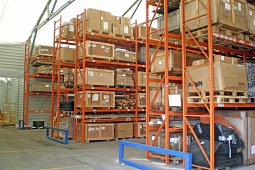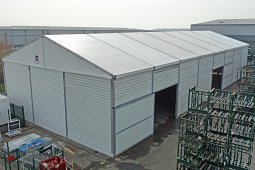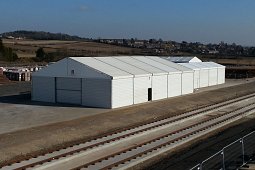04 April 2015 by Joe Ogden
Temporary warehouses, like any other structure, need some kind of flooring installed before they can be used for storage. There are lots of different types of flooring that are suitable for temporary warehouses, but the intended use of the building needs to be considered before a final decision is made.
Utilising Existing Ground Surfaces
If your temporary warehouse has been erected on an existing concrete hard standing, you are off to a flying start. An existing floor made from concrete is the most effective type of floor for temporary buildings, including warehouses. Erecting a temporary warehouse on concrete means you don’t have to worry about building a ramp for plant and machinery to access the building. There will also be more room for storage racks inside.
Constructing a Flooring in a Temporary Warehouse
Building a temporary storage facility on concrete is the most cost effective option, but if the chosen location is uneven, you will need to install some kind of flooring in order to use the building for storing heavy plant and machinery. Concrete is the simplest solution if a concrete slab is not already present. There will be a cost implication associated with constructing a concrete slab, but concrete is cheaper than installing a polymer floor.
Alternative Flooring Options
Polymer flooring is a good alternative to concrete. Polymer floor systems are incredibly strong and can easily support heavy machinery, plant and large quantities of stock. Another option is a grid mat system, although this is not as strong as concrete or polymer flooring.
From a cost perspective, it is always better to make use of the existing flooring, but if the ground is uneven or there isn’t a concrete slab, polymer flooring or a grid mat solution are perfectly acceptable alternatives.





